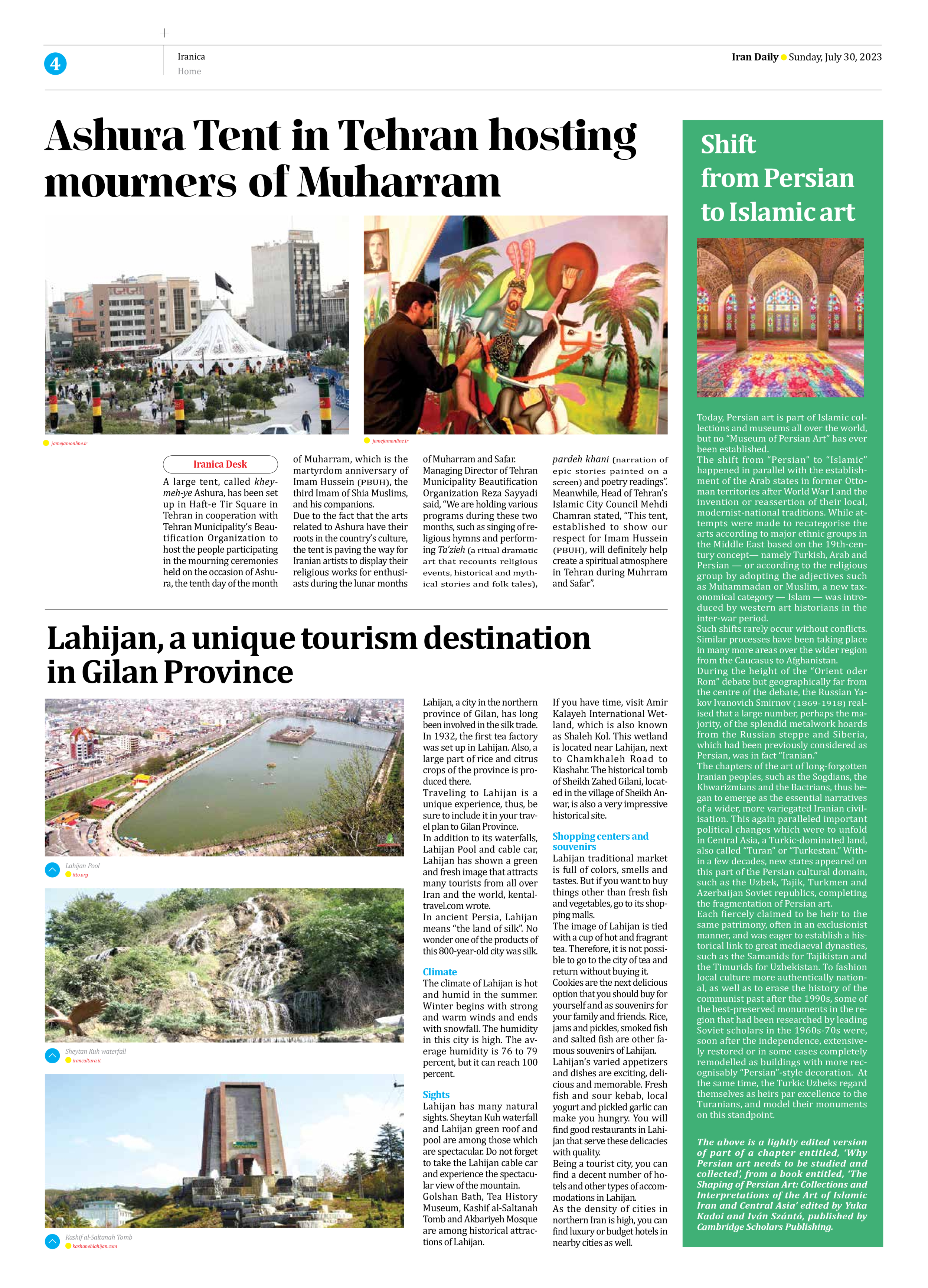
Shift from Persian to Islamic art
Today, Persian art is part of Islamic collections and museums all over the world, but no “Museum of Persian Art” has ever been established.
The shift from “Persian” to “Islamic” happened in parallel with the establishment of the Arab states in former Ottoman territories after World War I and the invention or reassertion of their local, modernist-national traditions. While attempts were made to recategorise the arts according to major ethnic groups in the Middle East based on the 19th-century concept— namely Turkish, Arab and Persian — or according to the religious group by adopting the adjectives such as Muhammadan or Muslim, a new taxonomical category — Islam — was introduced by western art historians in the inter-war period.
Such shifts rarely occur without conflicts. Similar processes have been taking place in many more areas over the wider region from the Caucasus to Afghanistan.
During the height of the “Orient oder Rom” debate but geographically far from the centre of the debate, the Russian Yakov Ivanovich Smirnov (1869-1918) realised that a large number, perhaps the majority, of the splendid metalwork hoards from the Russian steppe and Siberia, which had been previously considered as Persian, was in fact “Iranian.”
The chapters of the art of long-forgotten Iranian peoples, such as the Sogdians, the Khwarizmians and the Bactrians, thus began to emerge as the essential narratives of a wider, more variegated Iranian civilisation. This again paralleled important political changes which were to unfold in Central Asia, a Turkic-dominated land, also called “Turan” or “Turkestan.” Within a few decades, new states appeared on this part of the Persian cultural domain, such as the Uzbek, Tajik, Turkmen and Azerbaijan Soviet republics, completing the fragmentation of Persian art.
Each fiercely claimed to be heir to the same patrimony, often in an exclusionist manner, and was eager to establish a historical link to great mediaeval dynasties, such as the Samanids for Tajikistan and the Timurids for Uzbekistan. To fashion local culture more authentically national, as well as to erase the history of the communist past after the 1990s, some of the best-preserved monuments in the region that had been researched by leading Soviet scholars in the 1960s-70s were, soon after the independence, extensively restored or in some cases completely remodelled as buildings with more recognisably “Persian”-style decoration. At the same time, the Turkic Uzbeks regard themselves as heirs par excellence to the Turanians, and model their monuments on this standpoint.
The above is a lightly edited version of part of a chapter entitled, ‘Why Persian art needs to be studied and collected’, from a book entitled, ‘The Shaping of Persian Art: Collections and Interpretations of the Art of Islamic Iran and Central Asia’ edited by Yuka Kadoi and Iván Szántó, published by Cambridge Scholars Publishing.







